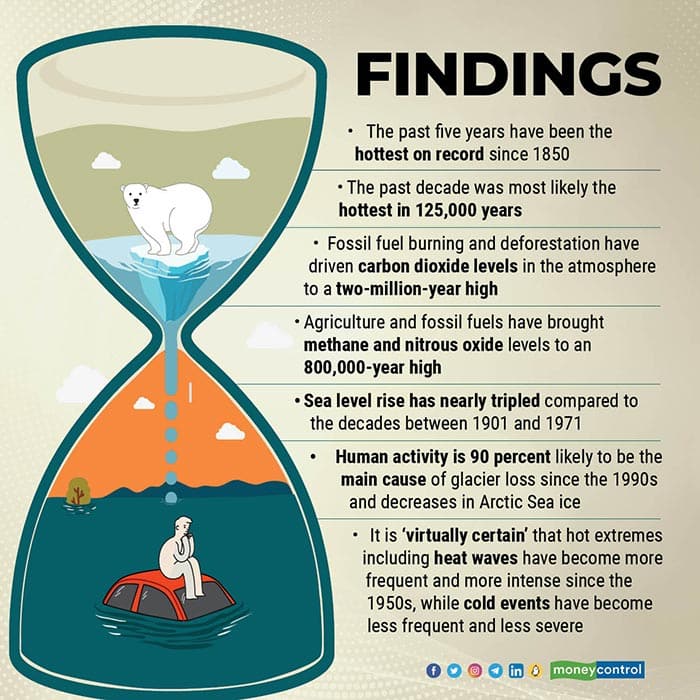



A new report from the United Nation’s Intergovernmental Panel on Climate Change (IPCC) makes the connection between fossil fuel burning, the warming of the planet, and the deadly extreme weather events playing out in real time around the world.
The first major review of the science of climate change since 2013, the IPCC Working Group I report, Climate Change 2021: the Physical Science Basis, prepared by hundreds of scientists and approved by 195 governments, unequivocally concludes that human influence has warmed the atmosphere, ocean and land. This warming is “already affecting many weather and climate extremes in every region across the globe”.
Drawing on more than 14,000 scientific studies, the IPCC report gives the most comprehensive and detailed picture yet of how climate change is altering the natural world — and what could still be ahead. Many of the changes observed in the climate are unprecedented in thousands, if not hundreds of thousands of years, and some of the changes already set in motion — such as continued sea level rise — are irreversible over hundreds to thousands of years.
According to the scientists, if carbon and methane emissions are slashed in the next decade, average temperatures could still be up 1.5°C by 2040 and possibly 1.6°C by 2060 before stabilising. If, instead, the world continues on its current trajectory, the rise could be 2°C by 2060 and 2.7°C by the century’s end. However, strong and sustained reductions in emissions of carbon dioxide (CO2) and other greenhouse gases would limit climate change.
While benefits for air quality would come quickly, it could take 20-30 years to see global temperatures stabilise. The report also points out that the current pledges by the signatories to the Paris agreements are “insufficient to reduce greenhouse gas emission enough” to keep global warming well below 2°C.

In India and most parts of South Asia the report concludes that, heat extremes have increased while cold extremes have decreased, and these trends will continue over the coming decades. Heat waves and humid heat stress will be more intense and frequent during the 21st century while both annual and summer monsoon precipitation will increase during the 21st century, with enhanced inter-annual variability i.e the year-to-year fluctuation of the climate from its mean state.
More worryingly, the report confirms that over most of the Hindu Kush Himalayan region, snow cover has reduced since the early 21st century, and glaciers have retreated and lost mass since the 1970s. The report forecasts that during the 21st century, snow-covered areas and snow volumes will decrease in most of the Hindu Kush Himalayan, and snowline elevations will rise and glacier volumes will decline.
The report also finds that relative sea level around Asia has increased faster than global average, with coastal area loss and shoreline retreat. Regional-mean sea level will continue to rise and marine heat waves will continue to increase. Which basically means that extreme sea level events that previously occurred once in 100 years could happen every year by the end of this century.
Calling the document “a code red for humanity”, Antonio Guterres, secretary-general of the United Nations said, “This report must sound a death knell for coal and fossil fuels before they destroy our planet.”
The truth is that there is only a small window to meet the goals set out in Paris Agreement and the pressure is now on for world leaders to agree on both a detailed and achievable plan to cut emissions by 50 percent and plans to adapt to climate impacts when they meet in Glasgow for climate talks in November.
Meanwhile, nearly 100 developing nations have endorsed a five-point plan, calling on richer countries to accelerate emissions cuts and increase funding for vulnerable nations.
Shailendra Yashwant is senior adviser, Climate Action Network South Asia (CANSA). Twitter: @shaibaba. Views are personal and do not represent the stand of this publication.
Discover the latest Business News, Sensex, and Nifty updates. Obtain Personal Finance insights, tax queries, and expert opinions on Moneycontrol or download the Moneycontrol App to stay updated!
Find the best of Al News in one place, specially curated for you every weekend.
Stay on top of the latest tech trends and biggest startup news.